
Overview
You might be wondering how to create an effective close plan. Well, let’s break it down into five essential steps!
- Identifying objectives is key.
- Understanding stakeholder needs will help you tailor your approach.
- Establishing timelines keeps everyone on track.
- Gathering all the necessary information is important.
- Documenting the plan clearly is essential.
These steps are crucial because they ensure your team is aligned and clear on what needs to be done. Plus, having a structured approach helps you wrap up projects successfully, minimizing misunderstandings and boosting overall productivity. So, why not give it a shot?
Key Highlights:
- A close plan serves as a tactical guide for wrapping up projects, ensuring team alignment and clarity.
- Key steps in creating a close plan include identifying objectives, understanding stakeholder needs, and establishing timelines.
- Gathering essential information involves collecting project documentation, stakeholder input, and understanding legal requirements.
- Setting SMART goals ensures objectives are specific, measurable, achievable, relevant, and time-bound.
- Collaboration with stakeholders is crucial; it involves scheduling meetings, using collaborative tools, and incorporating feedback.
- Documenting the close plan should be clear and accessible, including all relevant information and ensuring regular updates.
Introduction
Creating a successful close plan is a crucial step in making sure your project wraps up nicely and keeps stakeholders happy. You might be wondering what makes an effective close plan tick. Well, it’s not just about outlining the steps and timelines; it’s also about getting the team on the same page to work towards a common goal, which helps cut down on misunderstandings.
But here’s the kicker: many teams find it tough to gather the right information, set clear objectives, and collaborate with stakeholders along the way. So, what are some key strategies that can turn a simple checklist into a detailed roadmap for success? Let’s explore this together!
Understand the Purpose of a Close Plan
A detailed strategy is like your tactical guide for wrapping up a project or agreement. It lays out the essential steps, timelines, and responsibilities involved in the closing process. You might be wondering why this matters—well, understanding its purpose helps ensure that everyone on the team is on the same page and working toward a common goal. When you have a clearly defined final strategy, you can avoid misunderstandings and simplify the concluding process, ultimately leading to a successful outcome.
With the user guide creation features, teams can easily document their strategies, making sure that all goals and timelines are clearly conveyed and accessible. Plus, SowFlow helps you skip unnecessary meetings by providing instant updates to documentation, keeping everything relevant and boosting overall productivity. Now, let’s dive into some key steps to consider:
- Identify Key Objectives: What are the primary goals of your close plan? This could be finalizing contracts, ensuring compliance, or transitioning responsibilities.
- Recognize Stakeholder Needs: It’s crucial to understand the expectations of everyone involved, from clients to team members and management.
- Establish a Timeline: Determine the timeframe for each step in the closing process to keep the momentum going and maintain accountability.
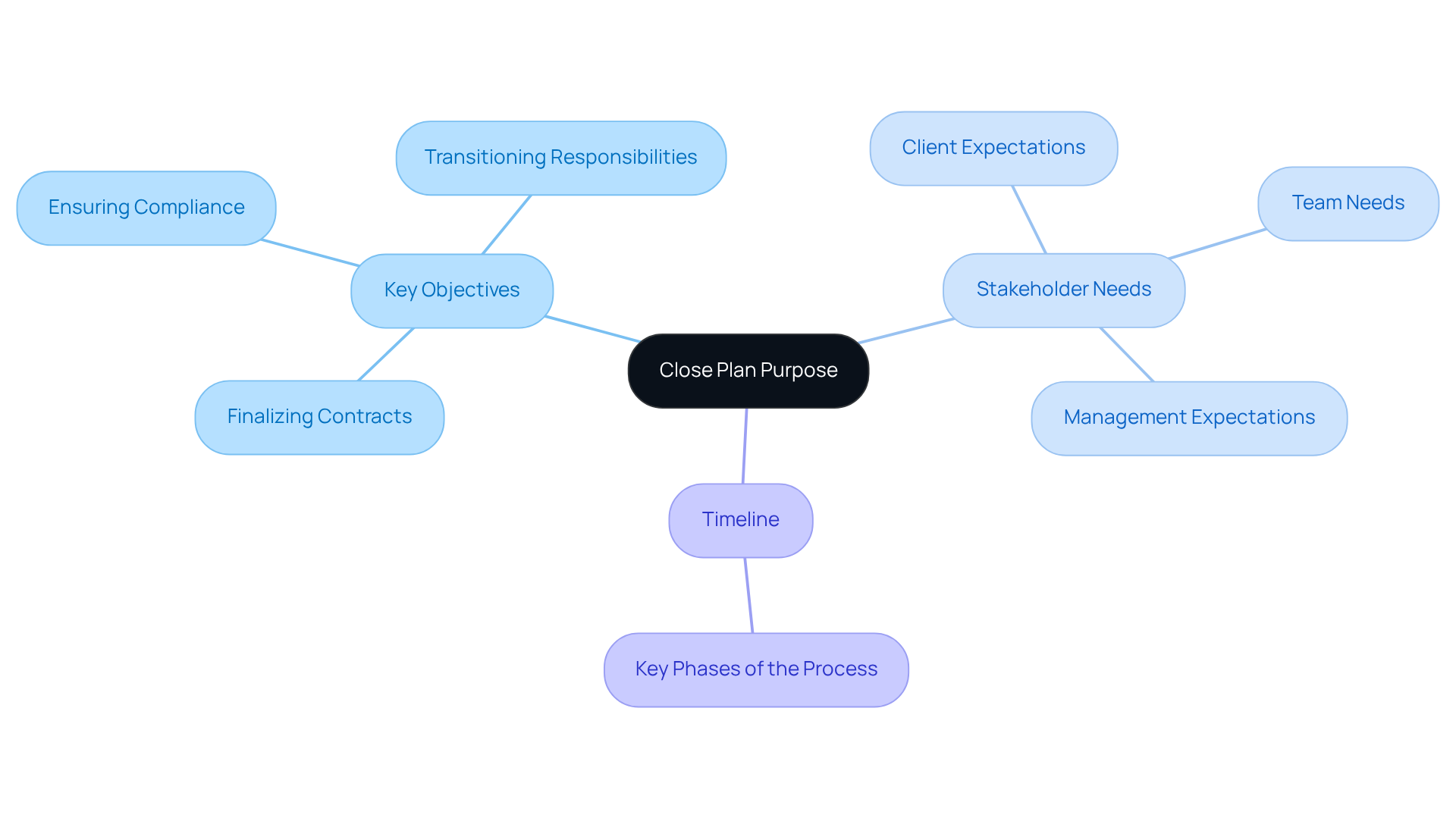
Gather Essential Information and Resources
To develop an effective closing strategy, you might be wondering where to start. Well, gathering all essential information and resources is key! This system really streamlines the process by giving you immediate access to all the documentation you need, making sure everything is easily reachable and up to date. Here’s what you should focus on:
- Project Documentation: Start by collecting all relevant documents, like contracts, proposals, and project plans. With this platform, you can easily create and update these documents, keeping them relevant in our ever-changing business world.
- Stakeholder Input: Have you reached out to essential stakeholders for their insights? Their perspectives can really influence the closing procedure. The user guide creation features of this platform will help you document these insights effectively.
- Tools and Templates: What tools or templates can make your documentation task easier? This platform provides a variety of templates and integrates seamlessly with project management software and CRM systems, simplifying your close plan.
- Legal and Compliance Requirements: It’s important to stay informed about any legal or compliance issues that might pop up during the closing process. This system helps you monitor those requirements and revise your documentation as needed.
Now, let’s dive into how these elements can really make a difference in your closing strategy!
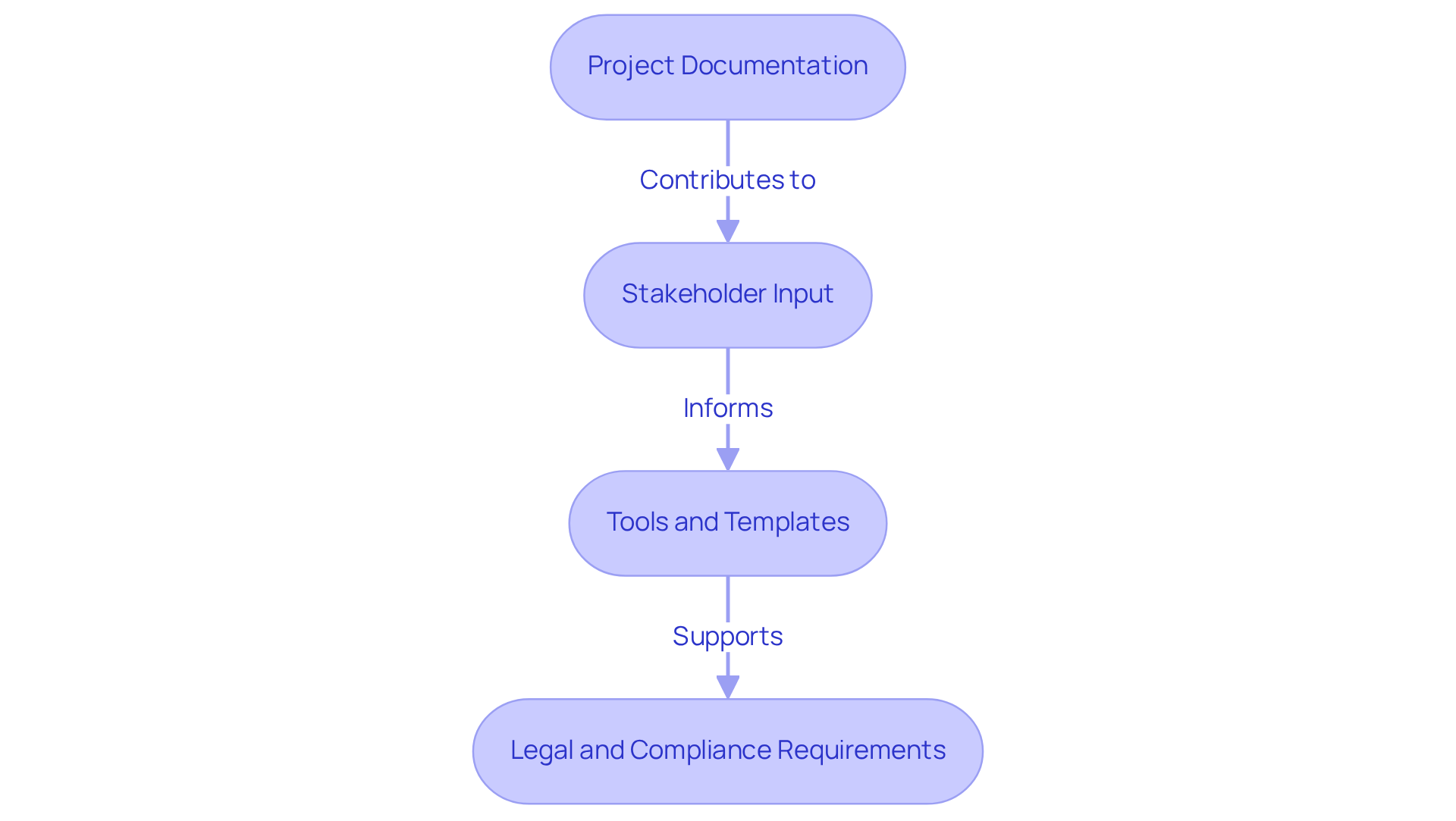
Define Clear Objectives and Desired Outcomes
Once you’ve gathered the necessary info, it’s time to nail down some clear objectives and desired outcomes for your close plan. You might be wondering how to get started. Here are a few tips to consider:
- Set SMART Goals: You want your objectives to be Specific, Measurable, Achievable, Relevant, and Time-bound. Instead of just saying 'complete the project,' how about specifying 'finalize the project by September 30, 2025'? This way, you can easily document these goals and keep them up-to-date, which is super important in today’s fast-paced business world.
- Align with Stakeholder Expectations: Make sure your objectives are in sync with what all stakeholders expect. This alignment really helps in getting everyone on board and supportive throughout the process. With the instant documentation solution from this platform, sharing these objectives becomes a breeze, making communication and collaboration smoother.
- Identify Key Performance Indicators (KPIs): Think about how you’ll measure success. Are you looking at customer satisfaction, project completion rates, or compliance with regulations? By using this platform, you can standardize your KPI documentation, making it easier for your team to keep an eye on progress.
- Document Objectives: Don’t forget to clearly record these objectives in your close plan so everyone on the team knows the goals and can work towards them. SowFlow makes it super easy to create user guides, allowing for quick updates and revisions to keep your documentation in line with your objectives.
Now, let’s dive into how these steps can really make a difference in your planning!
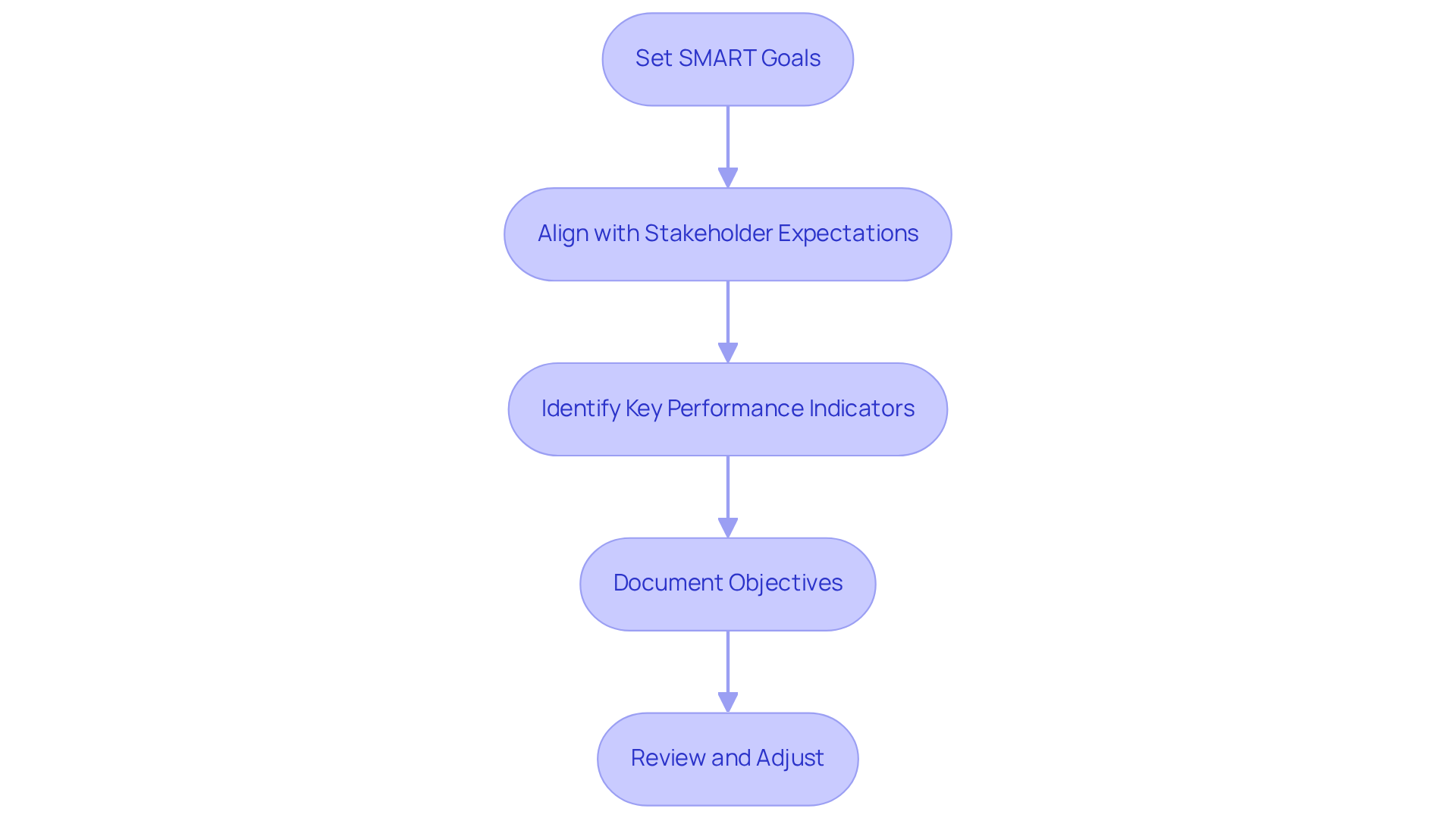
Collaborate with Stakeholders for Input and Feedback
Involving stakeholders in the finalization strategy development process is crucial for making sure that all viewpoints are taken into account. You might be wondering how to effectively collaborate with them. Here are some friendly tips:
- Schedule Meetings: Organize some get-togethers with key stakeholders to chat about the close plan and gather their input. This could include team members, clients, and management.
- Use Collaborative Tools: Leverage tools like shared documents, project management software, or communication platforms to make collaboration and feedback a breeze.
- Encourage Open Communication: Foster an environment where stakeholders feel comfortable sharing their thoughts and concerns. This can lead to valuable insights that really enhance the final strategy.
- Incorporate Feedback: Be open to tweaking the conclusion strategy based on stakeholder input. Not only does this enhance the strategy, but it also strengthens relationships with stakeholders.
Now, let’s dive into how these steps can make a difference in your strategy development!
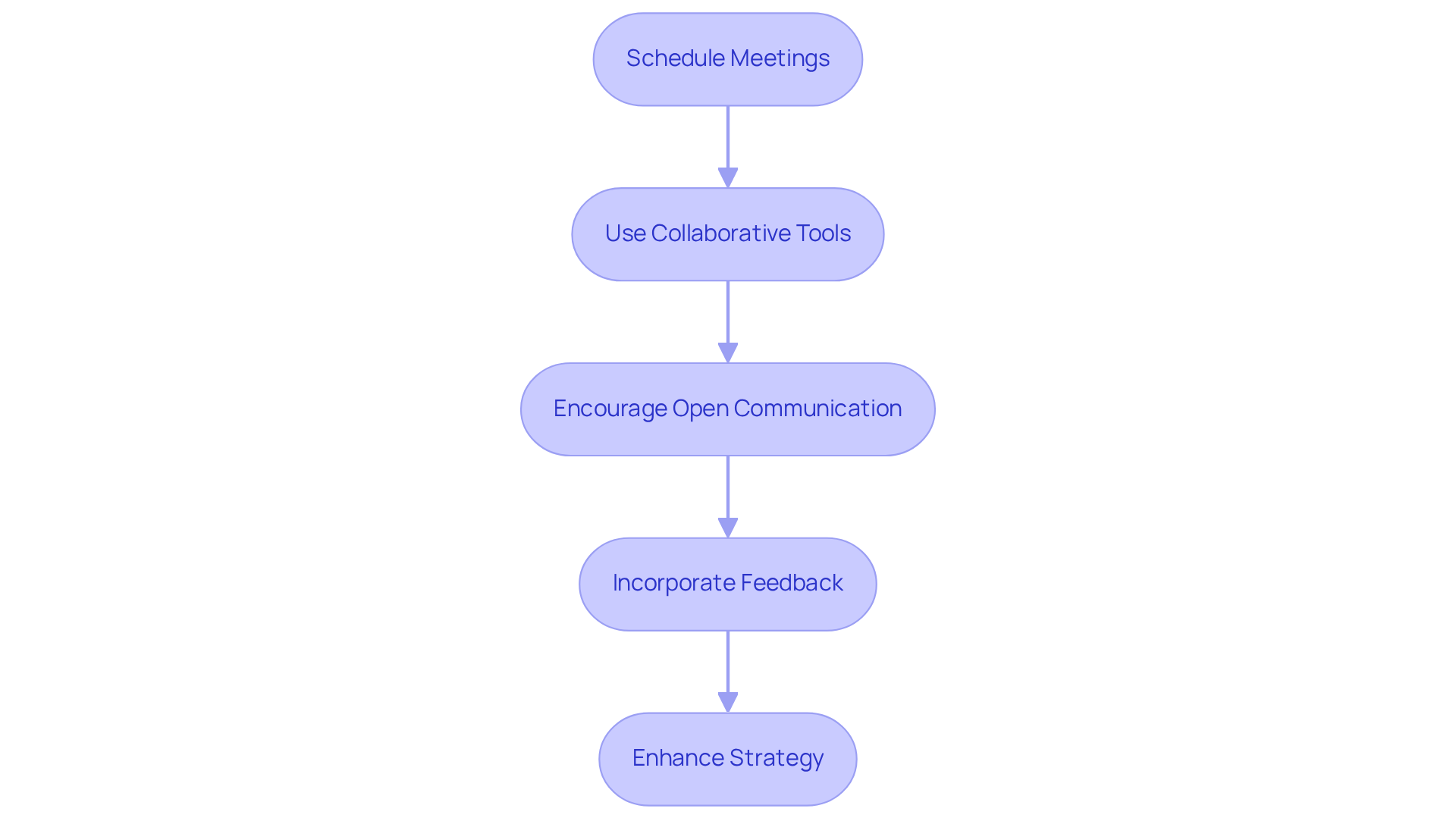
Document the Close Plan for Clarity and Accessibility
So, you’re at the final stage of crafting a solid strategy—now it’s time to record it in a way that’s clear and easy to access. You might be wondering how to make this happen. Here are some friendly guidelines to help you out:
- Use a Clear Format: Organize your close plan in a logical way. Think about using headings, bullet points, and tables to make it easier for everyone to read.
- Include All Relevant Information: Make sure your document has all the essential details. This means objectives, timelines, responsibilities, and contact info for your stakeholders should all be included.
- Ensure Accessibility: Keep the final strategy somewhere central, so all team members can easily find it. Cloud-based storage options are fantastic for this—they allow your team to access documentation right away, no fuss!
- Regularly Update the Document: As you progress through the closing process, be sure to revise your close plan. Add in any updates or new information. With tools like SowFlow, you can easily tweak your documentation, keeping it relevant and useful throughout the journey.
Now, let’s dive into how these steps can really make a difference in your workflow!
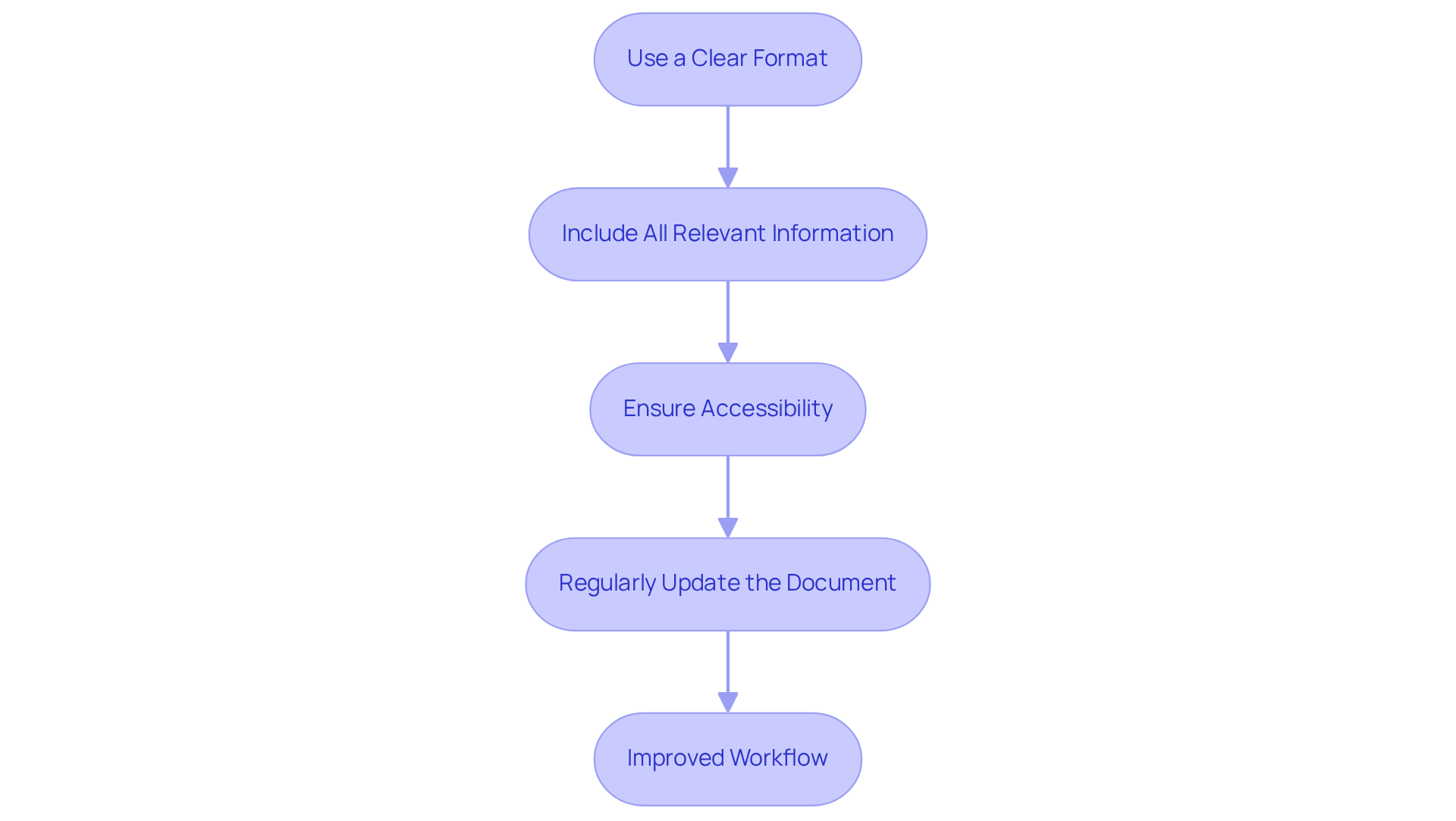
Conclusion
Wrapping up a project or agreement? You might be wondering how to create an effective close plan. Well, it’s essential! By following a structured approach, you can make sure all objectives are met, keep stakeholders engaged, and clearly define responsibilities. This strategic framework not only streamlines the closing process but also helps avoid misunderstandings, paving the way for a smooth transition to project completion.
So, what are the crucial steps in developing a close plan?
- Understand its purpose.
- Gather essential information.
- Define clear objectives.
- Collaborate with stakeholders.
- Document everything for clarity and accessibility.
Each of these elements plays a vital role in fostering communication, aligning expectations, and ensuring that all necessary resources are in place for a successful close. And don’t forget about the importance of SMART goals and stakeholder feedback—they really enhance the effectiveness of your plan!
Incorporating these best practices into your project management approach not only boosts the chances of achieving your desired outcomes but also strengthens team dynamics and stakeholder relationships. As you strive for continuous improvement, embracing a comprehensive close plan can be a game-changer in navigating the complexities of project completion. Taking the time to implement these strategies will lead to more successful project conclusions and a more cohesive team environment. So, why wait? Dive into these practices and watch your projects thrive!
Frequently Asked Questions
What is the purpose of a close plan?
A close plan serves as a detailed strategy for wrapping up a project or agreement, outlining essential steps, timelines, and responsibilities. It ensures that the team is aligned and working toward a common goal, helping to avoid misunderstandings and simplify the closing process.
How can a close plan improve team productivity?
A close plan improves productivity by providing clear documentation of strategies, goals, and timelines, which reduces the need for unnecessary meetings. It also allows for instant updates to documentation, keeping all information relevant and accessible.
What are the key objectives to identify in a close plan?
Key objectives may include finalizing contracts, ensuring compliance, and transitioning responsibilities among team members.
Why is it important to recognize stakeholder needs in a close plan?
Understanding stakeholder needs is crucial because their expectations can significantly influence the closing procedure. Recognizing these needs ensures that all parties are satisfied with the outcomes.
How do you establish a timeline for a close plan?
Establishing a timeline involves determining the timeframe for each step in the closing process to maintain momentum and accountability throughout the project.
What essential information should be gathered to develop a closing strategy?
Essential information includes project documentation (contracts, proposals, project plans), stakeholder input, tools and templates for documentation, and awareness of legal and compliance requirements.
How can the platform mentioned in the article assist in gathering essential information?
The platform streamlines the process by providing immediate access to all necessary documentation, allowing for easy creation and updates of relevant documents, and facilitating the collection of stakeholder insights.
What tools and templates are available to simplify the documentation task?
The platform offers a variety of templates and integrates with project management software and CRM systems, making it easier to document the close plan effectively.
How does the platform help with legal and compliance requirements?
The platform helps monitor legal and compliance issues that may arise during the closing process and allows for revisions to documentation as needed to ensure compliance.
👍
What others are liking
5 Steps to outline your ideal documentation structure
5 MINS READ
Where to start the your journey of mapping out your ideal documentation structure, aligning it with the very heartbeat of your organization?
Defining a winning level of detail in your process
3 MINS READ
What is too much detail, and what is too little? This article described in that winning level detail about what detail is enough.





